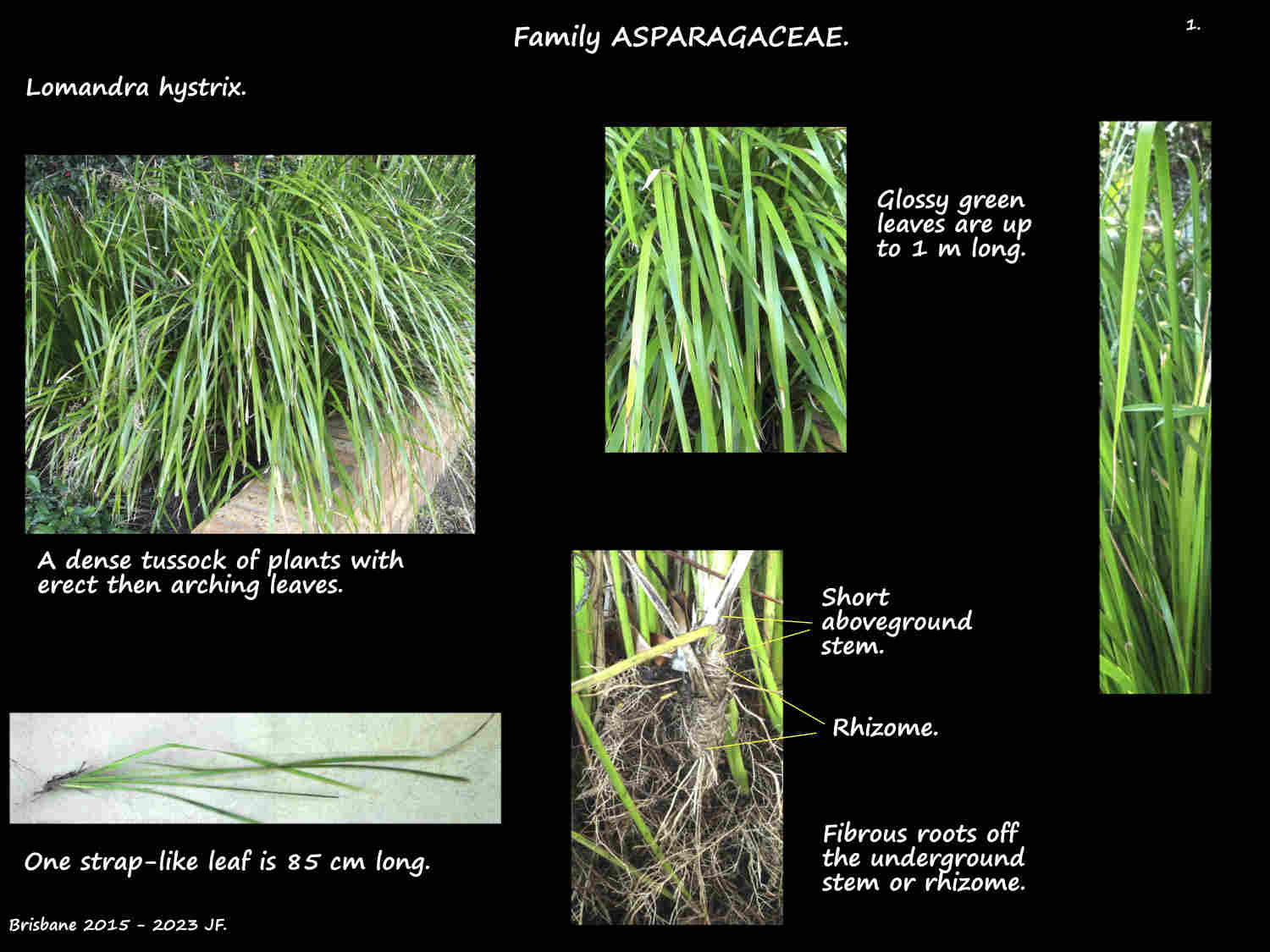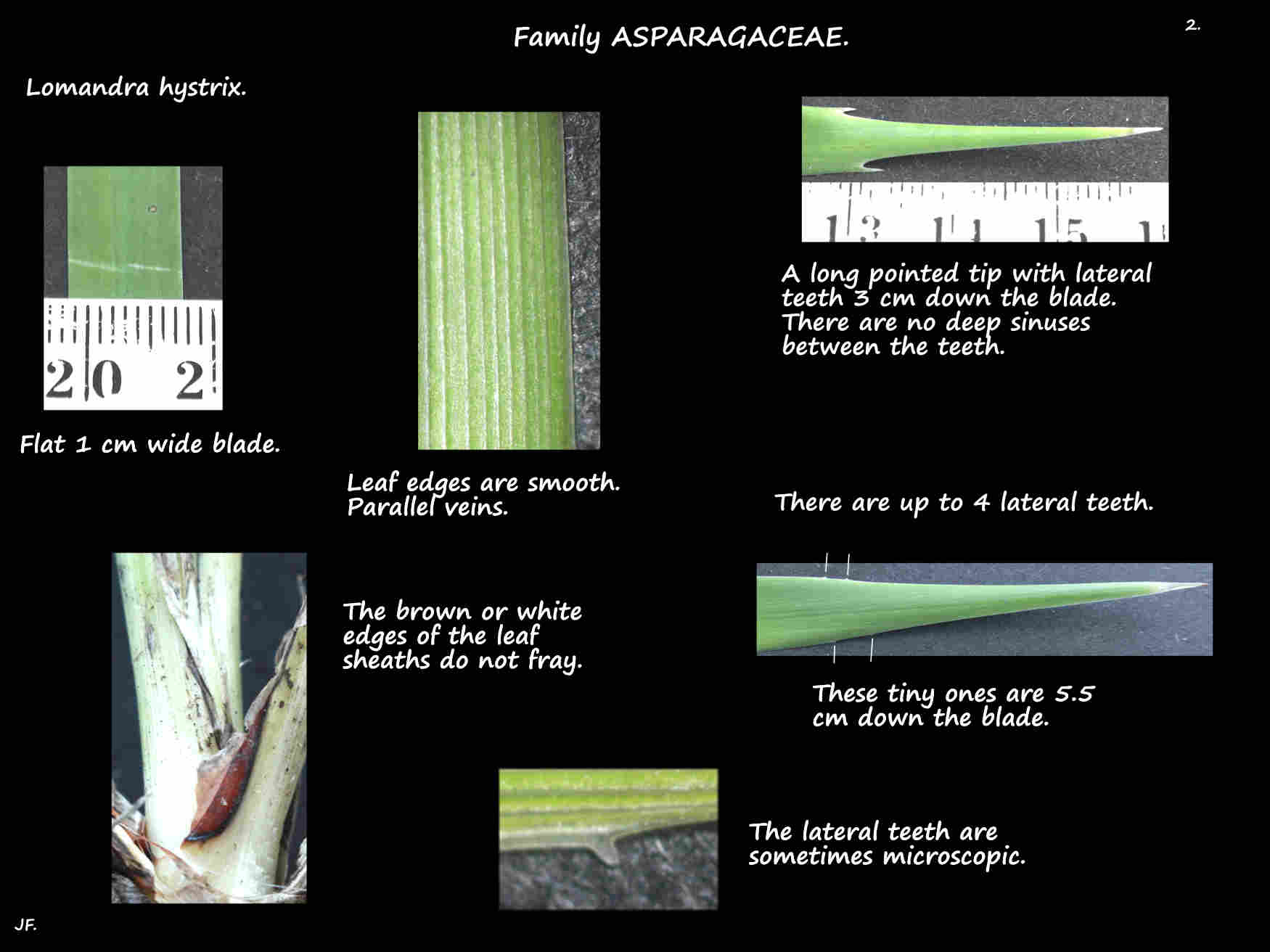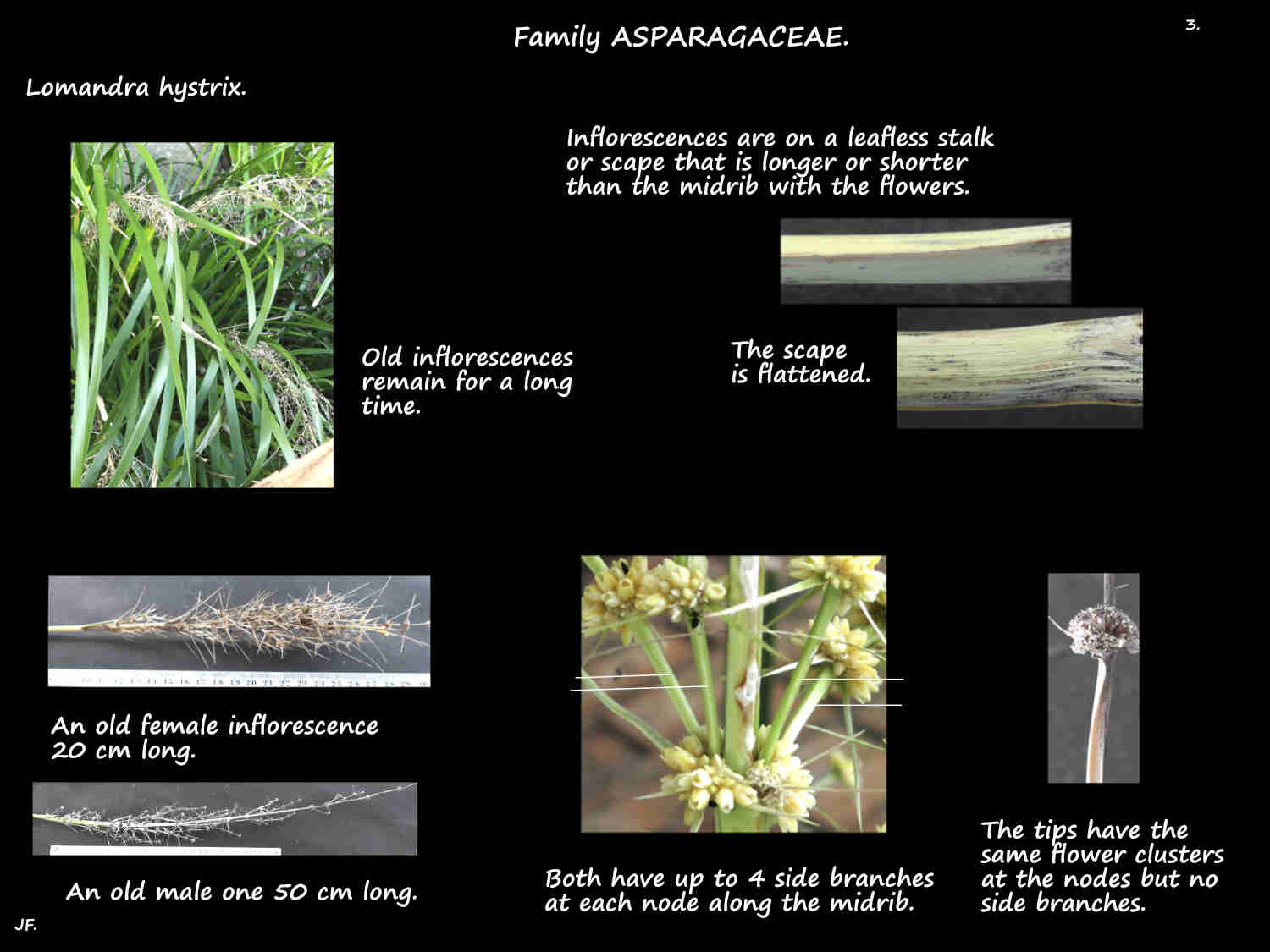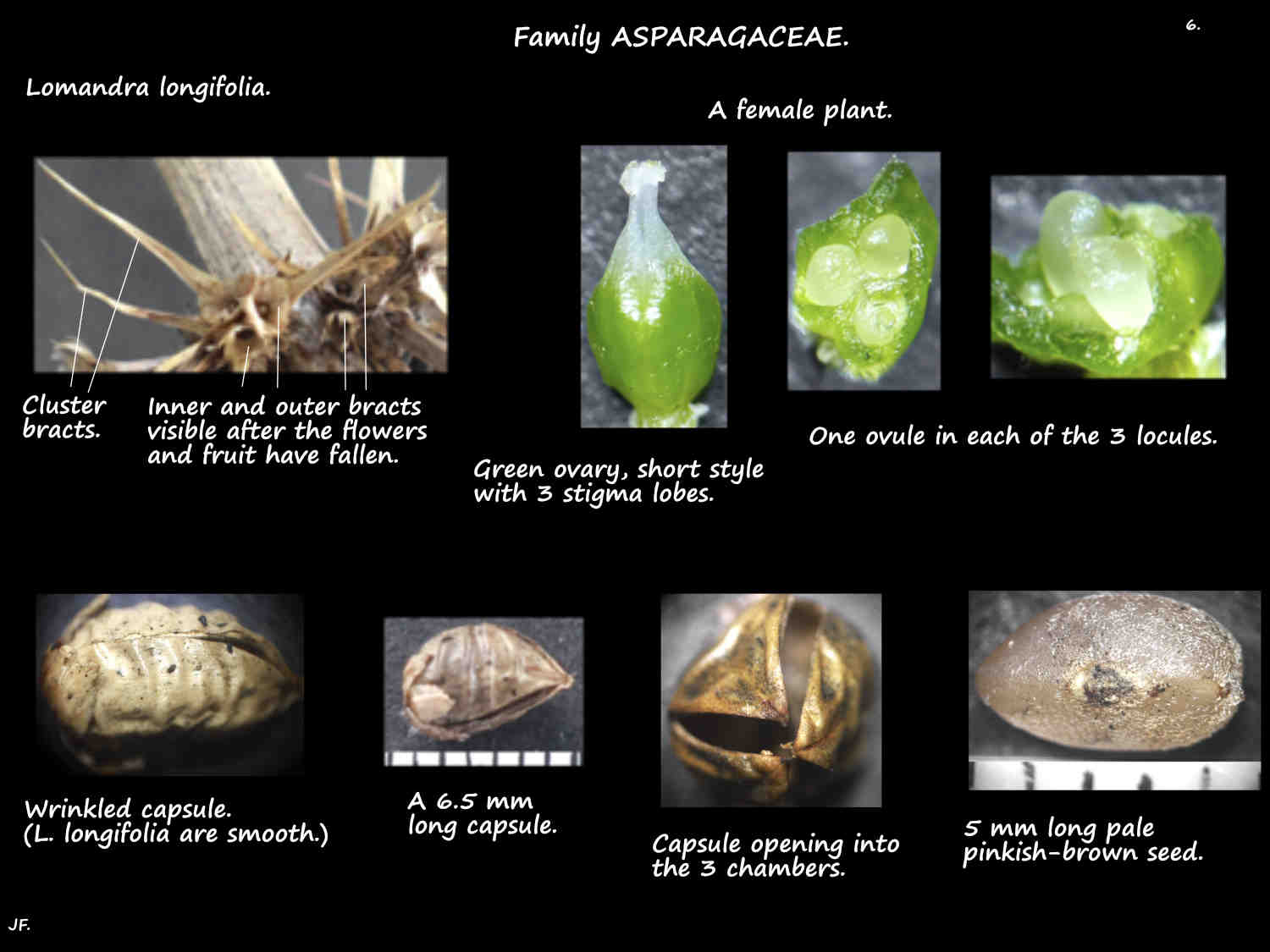Lomandra hystrix.
The Creek Mat-Rush, native to Australia is in Family Asparagaceae.
Lomandra longifolia subsp. hystrix is a synonym.
New plants grow from the underground rhizomes leading to large dense clumps.
The perennial plants are commonly used for landscaping.
The flat strap-like leaves are up to 1.5 (2) m long and 1 to 2 cm wide.
The blade has a long pointed tip with up to 4 small teeth below.
There are no deep notches (sinuses) between the teeth.
The edges of the brown or white basal leaf sheaths do not fray.
Male and female inflorescences, on a flattened leafless stalk or scape are similar.
The scape can be shorter or longer than the flower-bearing midrib or rachis.
They are panicles with side branches in whorls along the midrib.
There are typically 4 side branches at each node.
These primary branches, up to 20 cm long usually branch once more.
The stalkless flowers are in clusters at all the nodes.
The sharply pointed cluster bracts under each cluster are up to 5 to 6 cm long.
The outer and inner bracts under each flower are only a few mms long.
Male flowers are up to 3.5 mm long and the females 4.5 mm.
Both have 6 tepals in 2 whorls.
The outer 3 are yellow or purplish and the thicker fleshy inner ones are cream or yellow.
Male flowers have 6 stamens inserted on the tepal bases.
Female flowers have a green ovary with a 3-lobed stigma and 6 small unequal staminodes.
The fruit are wrinkled loculicidal capsules around 5 mm long with an apical beak from the short style.
Each of the 3 locules has one ovule but some may not develop into seeds.
This species is closely related to L. longifolia which differs by having inflorescences without
secondary branches and leaf tips with larger lateral teeth close to the tip and with deep sinuses between them.
J.F.








